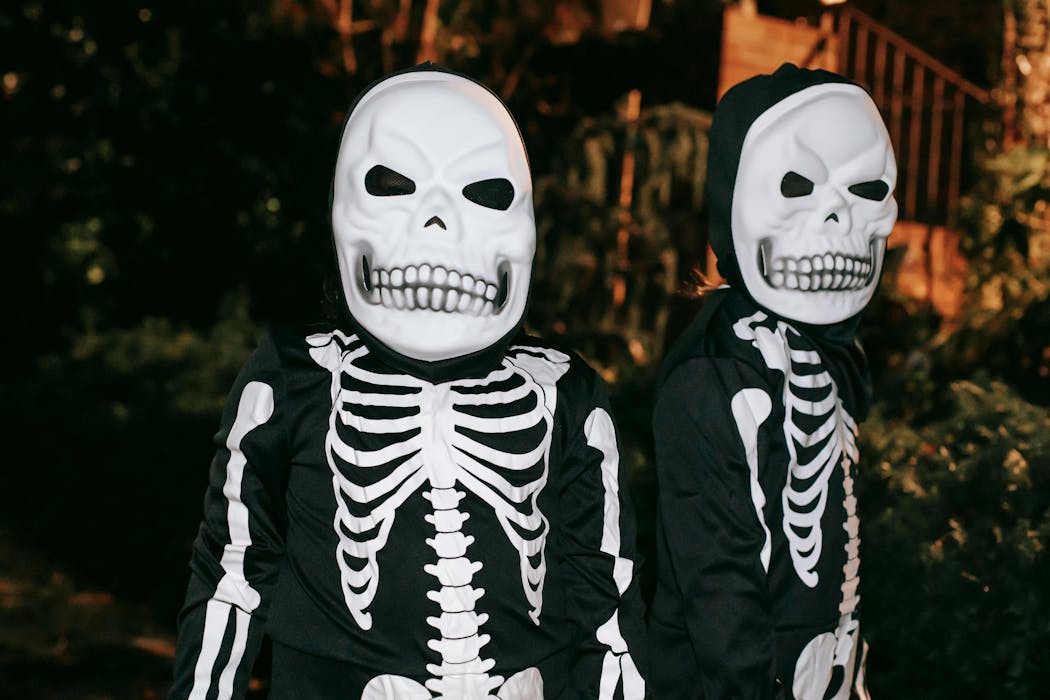
It is easy to see Halloween as an inappropriate time for children. With its mixture of bloody costumes and scary themes, it can often feel like it is luring kids into topics they are not ready to grapple with.
However, since the time of fairy tales, the gothic and the macabre have held a fascination for children.
Why?
If it’s good for Snow White …
Some of the most classic children’s stories are scary and, at times, brutal. They involve wolves eating grandmothers, witches trying to eat kids, kids pushing witches into ovens and stepmothers trying to poison their step daughters or use them as slaves.
It is horrible stuff. But it is important to remember these stories give children a safe space to negotiate and learn resilience. Child psychologist Bruno Bettelheim argues
Fairy tales intimate that a rewarding, good life is within one’s reach despite adversity – but only if one does not shy away from the hazardous struggles.
Studies by psychologists suggest fairy tales also show children they can cope with challenges in their own lives, because their fears can be managed and overcome. As English fantasy writer G.K. Chesterton said:
The baby has known the dragon intimately ever since he had an imagination. What the fairy tale provides for him is a St. George to kill the dragon.
What about gore?
In the 1880s, many of the children of the Victorian British slums grew up reading the famed “Penny Dreadfuls” – cheap, sensational, serialised novels. These were stories including bloody characters such as Sweeney Todd, as well as wild adventures, while readers were waiting to hear the true news about the exploits of Jack the Ripper in Whitechapel.
These tales, like violent video games are demonised today, were seen as corrupting young people.
These stories gave working class children a gateway into literacy. Alfred Cox, an ironworker’s son who became a doctor and prominent member of the British Medical Association, explained “far from leading me into a life of crime, [Penny Dreadfuls] made me look for something better”.
Labour Party politician John Paton described reading these Penny Dreadfuls during his childhood in Aberdeen as “good healthy stuff for an imaginative boy”.
We can compare these stories to modern tales such as Harry Potter. By inviting children into amazing new worlds where there are fearful creatures and events, they helped to develop a love of reading.
‘Scary’ is also funny
While it’s easy to be shocked by a child dressing up as a zombie, these kinds of things are a regular feature of mainstream kids’ entertainment today.
For example, zombies lose heads, arms and legs all the time in the 2012 movie, Hotel Transylvania – and for laughs. And the Count from Sesame Street is inspired from Bela Lugosi’s classic portrayal of Dracula.
Is Halloween too scary for kids?
So, while Halloween is “scary”, we can see it as scary in a way that kids can control, enjoy and even learn from.
They are already exposed to other scary things in the books, shows and movies they consume. And this can help them navigate other (real) scary things in their lives.
They can also choose which scary thing to dress up as. After all, what could be braver than showing the scary monster they’re an outfit to be worn and cast off when the child feels like it?
What are adults watching?
While it’s easy to tut-tut at children for their fascination for gore and horror, it’s not that different from adults. Cast a glance at streaming or podcast rankings and they are full of gore, true crime and horror.
Perhaps before we begin to fret about the fascination children have with the gory, we should look at whether our own is truly healthy.
This article is republished from The Conversation, a nonprofit, independent news organization bringing you facts and trustworthy analysis to help you make sense of our complex world. It was written by: Matthew Thompson, University of Southern Queensland
Read more:
- How much does it really cost to raise a child? An expert does the maths
- Samhain: the true, non-American origins of Halloween
- How The Rocky Horror Picture Show reveals the magic of cult cinema
Matthew Thompson does not work for, consult, own shares in or receive funding from any company or organisation that would benefit from this article, and has disclosed no relevant affiliations beyond their academic appointment.


 The Conversation
The Conversation
 Daily Voice
Daily Voice WILX News 10
WILX News 10 Roswell Daily Record
Roswell Daily Record Detroit Free Press
Detroit Free Press K2 Radio Local
K2 Radio Local Cowboy State Daily
Cowboy State Daily The Progress-Index
The Progress-Index FOX 13 Tampa Bay Crime
FOX 13 Tampa Bay Crime WABI
WABI AlterNet
AlterNet